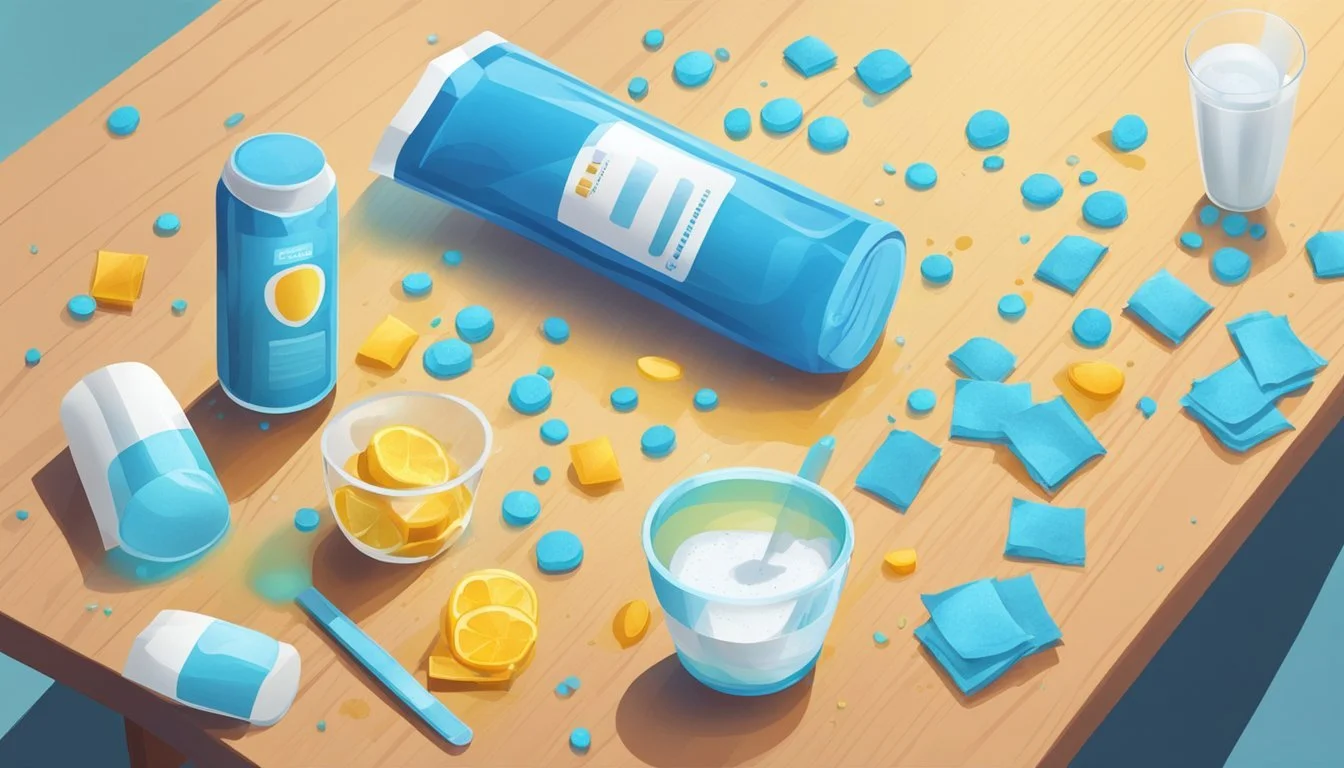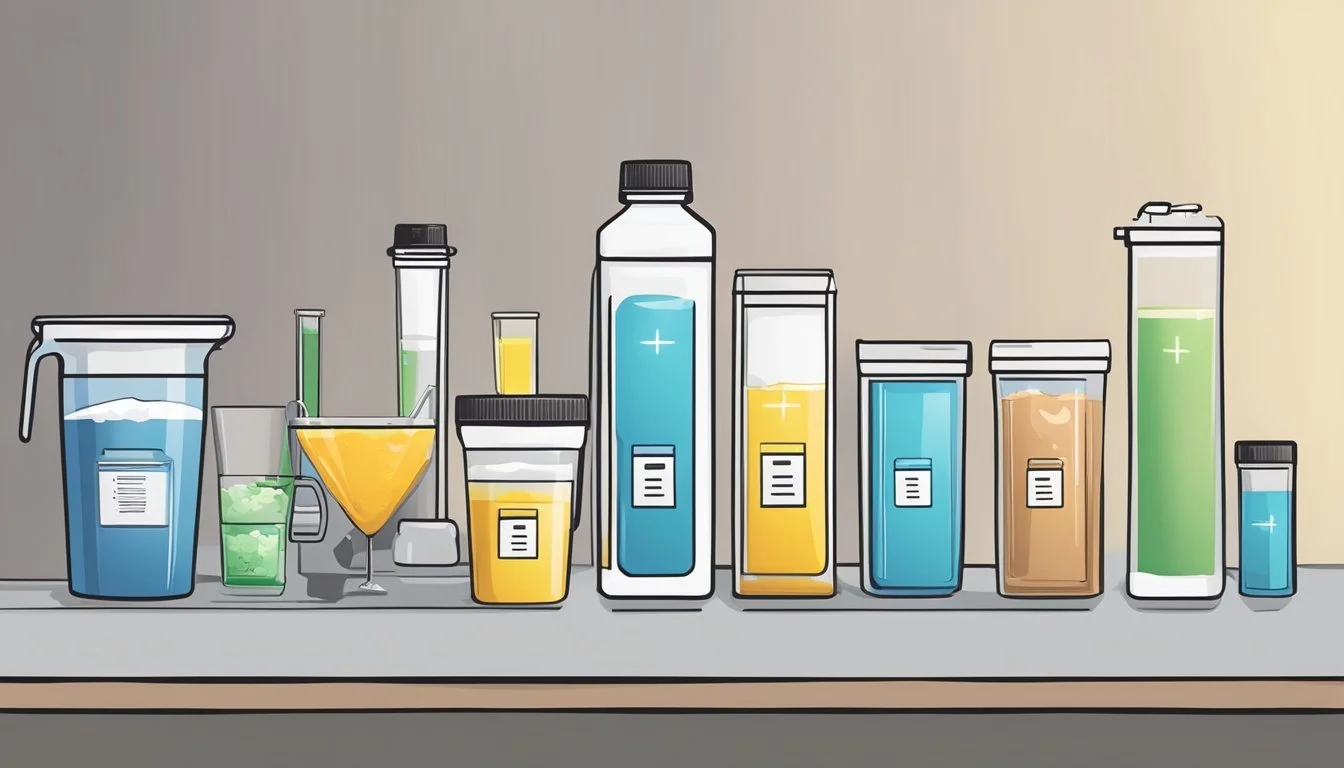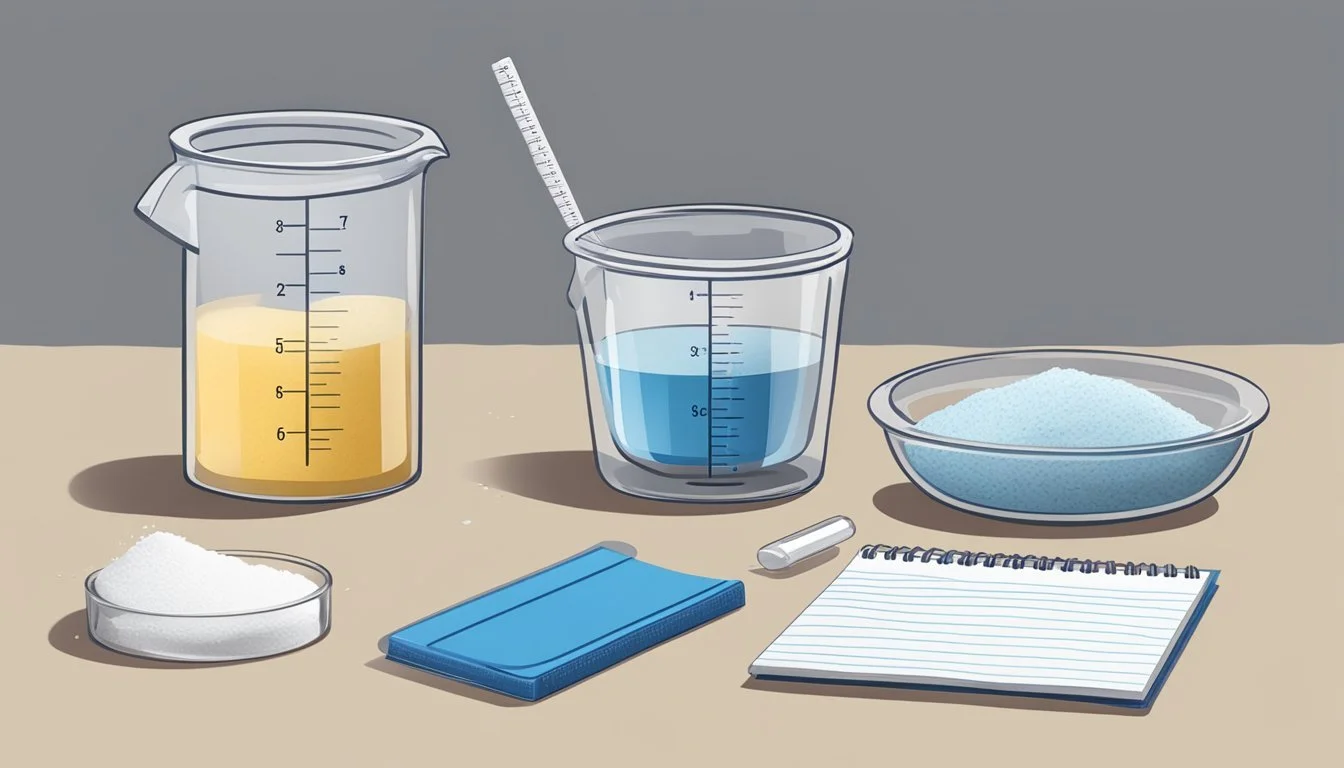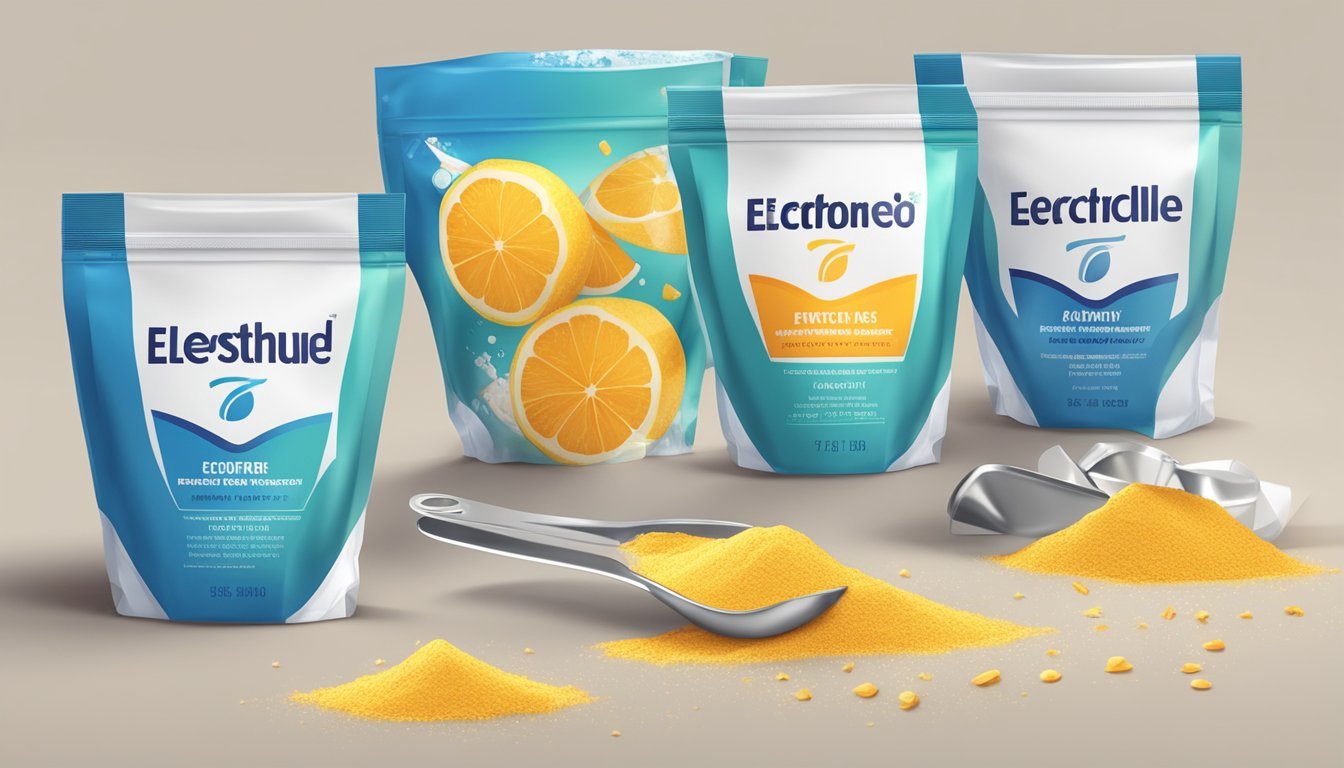How Many Servings of Enhanced Electrolyte Powder Recovery Drink Is Too Much
Expert Guidelines
Balancing electrolytes is essential for maintaining optimal health and performance, especially during periods of intense physical activity. Enhanced electrolyte powder recovery drinks offer a convenient way to replenish vital minerals like sodium, potassium, and magnesium. These drinks help prevent dehydration and reduce the risk of muscle cramps, promoting faster recovery.
The key to benefiting from electrolyte drinks lies in moderation; consuming more than 2-3 servings a day can lead to adverse effects, such as heart rhythm issues and high blood pressure. While these drinks can support hydration and recovery, overuse can be problematic. It’s crucial to balance intake with a healthy diet that naturally provides electrolytes.
Understanding your individual needs is important. Athletes and those engaging in strenuous activities may require more electrolytes than the average person. However, monitoring symptoms and adjusting accordingly is vital to avoid the pitfalls of overconsumption.
Understanding Electrolytes and Hydration
Electrolytes such as sodium, potassium, and magnesium are crucial for maintaining various body functions. Proper hydration, facilitated by these electrolytes, is essential for optimal health, particularly during physical activity.
Role of Electrolytes in the Body
Electrolytes are minerals that carry an electric charge and play a pivotal role in bodily functions.
Sodium helps with nerve signaling and muscle contractions.
Potassium is vital for cardiac health and fluid balance.
Magnesium supports muscle and nerve function.
These elements are lost through sweat and need replenishment to avoid imbalances that could lead to symptoms like confusion and fatigue.
Hydration and Fluid Balance
Hydration involves maintaining the right balance of fluids and electrolytes in the body.
Fluids help transport nutrients and waste products.
Sodium and chloride regulate water amounts in and out of cells, aiding in maintaining osmotic pressure.
Balanced hydration supports muscle function and prevents cramps and thirst. Electrolytes help the body retain necessary fluids to ensure overall well-being.
Dehydration Symptoms and Risks
Lack of proper hydration, or dehydration, can lead to serious health issues.
Symptoms include thirst, muscle cramps, and confusion. Severe dehydration can cause irregular heart rate and affect mental states leading to delirium or coma.
Fatigue is another common symptom, emphasizing the need for maintaining a good balance of electrolytes.
Proper hydration, assisted by electrolyte powders, mitigates these risks by keeping fluid levels within optimal ranges.
Recommended Dietary Allowances for Electrolytes
To maintain proper hydration and bodily functions, it's important to understand the recommended dietary allowances (RDAs) for key electrolytes such as sodium, potassium, magnesium, and calcium. These guidelines help ensure that individuals consume adequate amounts to support health without risking overconsumption.
Sodium and Potassium Guidelines
Sodium: The federal dietary guidelines recommend that adults consume no more than 2,300 milligrams (mg) of sodium per day. Ideally, the limit should be 1,500 mg for most adults, according to the American Heart Association. This is to prevent issues such as hypertension and heart disease, which are linked to high sodium intake.
Potassium: Potassium is crucial for maintaining normal fluid balance and nerve function. The recommended daily intake for potassium is 3,400 mg for adult men and 2,600 mg for adult women. An adequate amount of potassium supports heart health by counteracting the adverse effects of sodium.
Magnesium and Calcium Recommendations
Magnesium: This mineral is vital for muscle and nerve function, as well as energy production. The RDA for magnesium is 400-420 mg for men and 310-320 mg for women. A balanced intake aids muscle recovery and helps prevent cramps.
Calcium: Essential for bone health and cellular functions, the RDA for calcium is 1,000 mg per day for most adults. Women over 50 and men over 70 should increase their intake to 1,200 mg per day to protect against bone density loss. Adequate calcium intake supports muscle contractions and blood clotting.
Assessing Different Electrolyte Sources
Electrolyte sources vary widely, each with unique benefits and potential drawbacks. This comparison includes electrolyte drinks, foods, and powders, examining their effectiveness and suitability for different needs.
Comparing Electrolyte Drinks and Foods
Electrolyte drinks, including sports drinks and coconut water, provide fast hydration. They commonly contain significant levels of sodium, potassium, and sugars. For example, a typical sports drink might contain 299 mg of sodium and 140 mg of potassium per 12 ounces.
In contrast, whole foods like fruits, vegetables, and milk offer natural electrolytes alongside additional nutrients. Bananas, for example, are rich in potassium, while leafy greens contain calcium and magnesium. Milk provides sodium, potassium, and magnesium.
Pros and Cons of Powder Form Electrolytes
Electrolyte powders offer customization in electrolyte levels and are convenient to use. They support hydration, muscle function, and energy production. Benefits include improved athletic performance and enhanced recovery. However, the risk exists of consuming excessive electrolytes if not properly measured.
Powdered forms can also vary in quality. High-quality products ensure balanced electrolytes without unnecessary sugars or additives. Users must stay informed to avoid electrolyte imbalances and achieve optimal hydration.
How Much Is Too Much? Overconsumption and Its Effects
Consuming too much enhanced electrolyte powder recovery drink can lead to serious health issues, particularly under certain conditions like strenuous exercise and hot climates. It's crucial to recognize the symptoms of overconsumption, understand related health conditions like hyponatremia and hyperkalemia, and consider the impact of exercise and environment.
Identifying Overconsumption Symptoms
Overconsumption of electrolyte drinks often leads to symptoms such as muscle cramping, fatigue, and irregular heartbeats. An excess intake of sodium can result in high blood pressure and swelling. Additionally, too much potassium can cause digestive issues and abnormal heart rhythms.
These symptoms may vary depending on individual health conditions and the amount consumed. It's important to monitor the body's response, especially after intense physical activity or exposure to heat. Regular check-ups can help identify and mitigate the risks of excessive electrolyte intake.
Understanding Hyponatremia and Hyperkalemia
Hyponatremia occurs when sodium levels in the blood become too low. This can happen when consuming excessive fluids, diluting the sodium concentrate. Symptoms include headaches, confusion, seizures, and in severe cases, coma.
Hyperkalemia refers to high potassium levels in the blood. This condition may cause muscle weakness, fatigue, and dangerous heart rhythm problems. It's often exacerbated by overconsumption of potassium-rich electrolyte drinks, particularly in people with underlying health conditions like kidney disease.
Both conditions require immediate medical attention and can be managed by balancing fluid and electrolyte intake according to individual needs and activity levels.
The Role of Exercise and Environment
Exercise and environmental factors play vital roles in determining electrolyte needs. Strenuous exercise causes significant fluid and electrolyte loss through sweat, necessitating replacement to maintain balance. However, overconsumption without adequate monitoring can lead to the issues mentioned earlier.
Hot climates increase the rate of electrolyte loss, making people more susceptible to dehydration and imbalances. It's crucial to tailor electrolyte consumption to the intensity of the exercise and the surrounding climate. Consulting with health professionals can provide personalized guidance, ensuring safe and effective electrolyte use.
Dietary Considerations for Athletes and Active Individuals
Athletes and those engaging in regular physical activity need tailored nutrition strategies to optimize energy levels and recovery. Proper dietary practices, including hydration and nutrient intake, are vital for maintaining physical performance and preventing fatigue.
Customizing Intake Based on Activity Level
The dietary needs of athletes vary significantly based on their activity levels. Those who participate in high-intensity sports may require 40-70 calories per kilogram of body weight daily. Conversely, less active individuals generally need around 25 calories per kilogram.
Carbohydrates are essential as they serve as the primary fuel during exercise. Recommendations often include consuming 6-10 grams of carbohydrates per kilogram of body weight each day to maintain energy and endurance levels.
Athletes also need more protein compared to non-athletes. Daily intake should range from 1.2 to 2.0 grams per kilogram to support muscle repair and growth. Fats, while needed less in quantity, should not be neglected as they provide a concentrated source of energy.
The Importance of Post-Exercise Rehydration
Post-exercise rehydration is critical to replenish lost fluids and electrolytes. During intense workouts, athletes can lose significant amounts of sweat, which contains vital electrolytes such as sodium and potassium. Replenishing these helps prevent muscle cramps and fatigue.
A common recommendation is to drink 6 to 12 ounces of fluid for every 20 minutes of exercise. Enhanced electrolyte drinks are beneficial as they also provide carbohydrates, aiding in faster recovery of muscle glycogen stores.
Using electrolyte powders can further enhance rehydration efforts. These powders help support cellular and nerve functions, improving overall athletic performance. It's important to balance fluid intake to avoid both dehydration and hyponatremia, a condition caused by low sodium levels due to excessive water intake.
Managing Side Effects and Interactions
While enhanced electrolyte powder recovery drinks can offer numerous benefits, it's crucial to be aware of potential side effects and interactions with medications. Overconsumption can lead to several health issues, and interactions with certain drugs can compound these problems.
Recognizing Side Effects of Excessive Intake
Excessive intake of electrolyte powders can lead to various side effects. Common symptoms include headache, nausea, and vomiting. Users may also experience diarrhea and confusion if electrolyte levels are too high. An overload of specific electrolytes like sodium can result in high blood pressure or an abnormal heart rhythm.
Muscle cramps and weakness are also significant indicators of electrolyte imbalance. It is essential to monitor these symptoms and consult a healthcare provider if they persist. Keeping track of intake and avoiding overuse is critical to preventing these adverse effects.
Drug-Electrolyte Interactions
Certain medications may interact with electrolyte powders, potentially causing harmful effects. Diuretics and some cardiac medications can alter electrolyte levels, making it necessary for patients to adjust their electrolyte intake accordingly.
ACE inhibitors and angiotensin II receptor blockers (ARBs), commonly prescribed for managing blood pressure, can increase potassium levels. When combined with potassium-rich electrolyte powders, this can lead to hyperkalemia, a dangerous condition characterized by excessive potassium in the blood.
Patients should consult healthcare professionals before starting electrolyte supplementation if they are on medication. Professional guidance ensures safe usage and helps avoid any detrimental interactions. Practical conversations with healthcare providers are vital for managing these risks effectively.
By paying close attention to side effects and drug interactions, users can safely enjoy the benefits of electrolyte powder recovery drinks. Active monitoring and consultation with healthcare professionals are the best strategies for managing potential complications.
Seeking Professional Guidance
Consulting qualified professionals ensures the safe consumption of enhanced electrolyte powder drinks. Both healthcare providers and registered dietitian nutritionists (RDNs) can provide personalized recommendations based on individual health needs.
When to Consult a Healthcare Provider
A healthcare provider should be consulted if one experiences symptoms like confusion, nausea, or muscle cramps after consuming electrolyte powders. Underlying health conditions such as hypertension or kidney disease can affect how the body processes electrolytes, making professional consultation essential.
Regular check-ups help identify if electrolyte consumption is affecting overall health. Any sudden changes in physical or mental state should prompt immediate consultation.
Physicians can also conduct blood tests to monitor electrolyte levels and ensure they remain within appropriate ranges. This is critical for individuals with chronic illnesses or those on medications that may interfere with electrolyte balance.
Working with a Registered Dietitian Nutritionist
A Registered Dietitian Nutritionist (RDN) offers tailored advice on how much electrolyte powder is beneficial for one's lifestyle and exercise regimen. RDNs will assess dietary intake and daily activity to create a balanced plan that avoids overconsumption.
RDNs can help identify the optimal mix of sodium, potassium, and other minerals necessary for efficient hydration and recovery. They provide evidence-based recommendations, ensuring nutritional strategies align with one’s health goals.
Working with an RDN is particularly useful for athletes or individuals with specific dietary restrictions. They offer meal planning and hydration strategies to support performance while preventing electrolyte imbalance.
Decoding Labels and Marketing Claims
Electrolyte recovery drinks often come with a blend of nutrients and additives. It's crucial to understand these components and evaluate the presence of sugar and sweeteners to make an informed choice.
Understanding Nutrients and Additives
Electrolyte beverages typically contain essential minerals like magnesium, potassium, sodium, and calcium. These nutrients help maintain hydration and support muscle and nerve function. Examining the label for the quantities of each nutrient can determine if the drink meets daily requirements or exceeds them.
Additives might include preservatives or artificial flavors. Preservatives extend shelf life but may not be necessary for everyone. Look for natural flavors and minimal additives to avoid potential side effects. Consuming these drinks in moderation ensures the balance of nutrients without excessive intake of additives.
Evaluating Sugar and Sweeteners
Added sugars and artificial sweeteners are common in electrolyte powders. Monitoring sugar intake is important, especially for those managing weight or metabolic conditions. Labels may list sugars as glucose, fructose, or high fructose corn syrup.
Artificial sweeteners like aspartame or sucralose provide sweetness without calories but can pose health risks if consumed in large amounts. Check if the product uses natural alternatives like stevia or monk fruit. Being aware of these ingredients ensures the selection of a healthier electrolyte drink.
Lifestyle Tips for Maintaining Electrolyte Balance
Maintaining electrolyte balance involves carefully monitoring diet and hydration. Consuming the right foods and drinks can help ensure optimal levels of essential electrolytes like sodium, potassium, and magnesium.
Diet and Hydration Strategies
Hydration plays a key role in maintaining electrolyte balance. Drinking water regularly is essential. For individuals engaging in intensive physical activities, electrolyte-enhanced drinks can help replenish lost minerals. Coconut water is an excellent natural alternative, rich in potassium and other essential electrolytes.
Water isn't the only beverage that contributes to hydration. Tea, milk, and fruit juice can also aid in maintaining fluid and electrolyte balance. Incorporating these into daily consumption can support overall health without the need for overly sweetened sports drinks.
Natural Sources and Alternatives
Incorporating certain foods into your diet can provide a natural source of electrolytes. Fruits like bananas and citrus fruits such as lemons and limes are high in potassium and vitamin C. Vegetables like spinach and dairy products such as yogurt offer essential minerals like magnesium and calcium.
For those looking to minimize processed supplements, these natural foods can be just as effective as commercial electrolyte powders. Consider adding a variety of fruits and vegetables to meals and snacks to maintain electrolyte balance effectively. Spinach, bananas, and yogurt, in particular, are easy additions to smoothies or salads, providing a nutrient boost.
Final Thoughts on Enhanced Electrolyte Powder Recovery Drinks
Enhanced electrolyte powder recovery drinks can play a key role in maintaining hydration and preventing dehydration. These powders often contain a balanced mix of essential minerals such as sodium, potassium, calcium, and magnesium, which help replenish lost electrolytes during exercise.
Electrolyte imbalance can occur if too many servings are consumed. Symptoms might include confusion, irregular heart rates, and fatigue. It's important to follow the recommended serving sizes, which are typically listed on the product packaging.
Hydration is critical for athletic performance and muscle recovery. The correct dosage of electrolyte powder can enhance hydration levels, helping athletes recover faster post-exercise.
Several products are designed for specific purposes:
For Athletes: Formulations like Gnarly Nutrition Hydrate Electrolyte Powder.
Low-Cost Options: Zeal Naturals Enhanced Electrolytes Powder.
It's beneficial to choose a product that suits individual health needs and exercise intensity. A balanced approach ensures that one gets the benefits without the risks associated with overconsumption.












